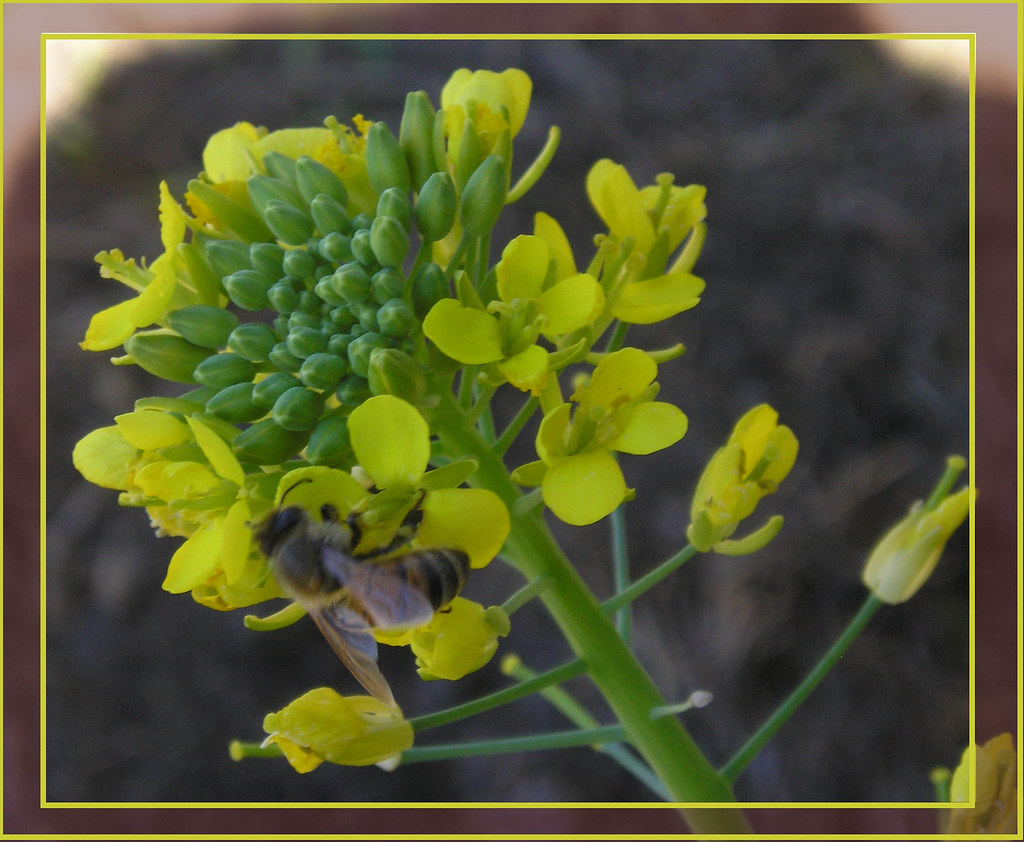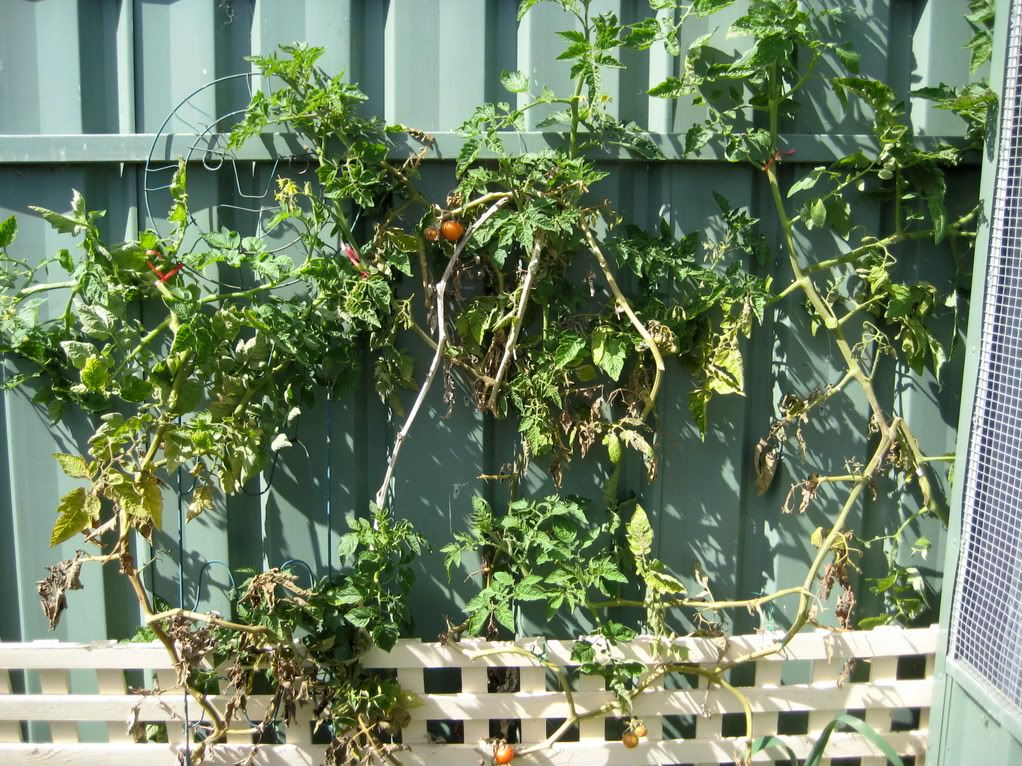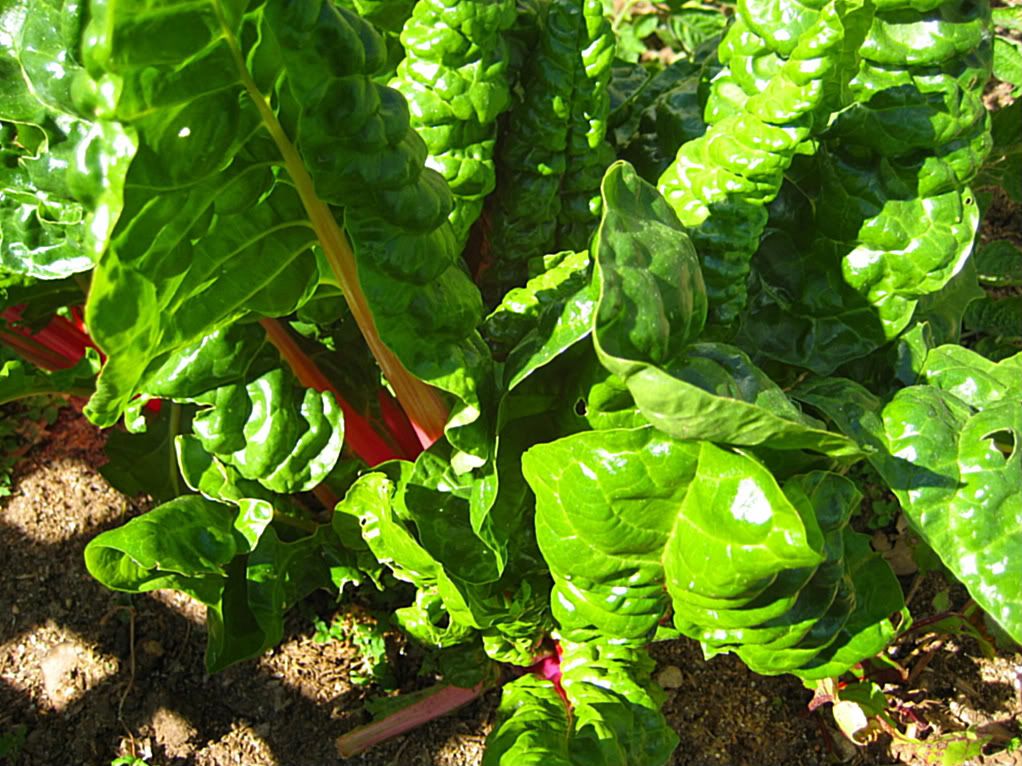This blog is really about a method my Father taught me about sowing carrots Every time I sow this way he is there with me in my thoughts and heart so in a sense he lives on in every crop I sow. This blog then is really from him to you. My part has been to take a little time to take photos to illustrate the steps and of course write what he taught me. So enjoy the fruits of his experience.
Carrots are an easy crop to grow. In the colder regions they are sown from early spring until early summer, in succession. Where I live I can grow them all year round and so, I sow a few meters of seeds every two months in succession to enjoy a continual supply throughout the year. I think it always worth pushing the boundaries too when you plant – what does it matter if you lose a crop to frost when you find out for sure where your boundaries are with when to sow.

For my winter soups I also grow parsnips and use this same method of sowing. With root crops such as these the looser the soil the better although they will grow successfully in clay soils. Looser and sandier soils mean the tap root can reach deep into the soil looking for moisture creating good long fleshy carrots. This means that drainage is good so that the roots will not rot in excessive moisture in areas of prolonged rain periods. The drawback of loose soil is leaching of nutrients, but with carrots their tap root reaches deep into the soil. Also, remember that the nutrients are brought back to the surface and stored in their foliage so composting or leaving them to rot on the surface when you harvest them will re-cycle these stored nutrients to the surface again. I personally feed the tops to the rabbits and recycle them this way.

 First of all it is worth digging the soil to spade depth and a bit more and remove any stones or other objects that will impede growth, causing forked or miss-shaped roots. This includes fresh manures. You need now make 1 cm or 1/2 inch deep trenches in the soil surface using tomato stakes or something similar in rows about 6 – 12 inch or 15 - 30cm apart, depending on the variety.
First of all it is worth digging the soil to spade depth and a bit more and remove any stones or other objects that will impede growth, causing forked or miss-shaped roots. This includes fresh manures. You need now make 1 cm or 1/2 inch deep trenches in the soil surface using tomato stakes or something similar in rows about 6 – 12 inch or 15 - 30cm apart, depending on the variety.
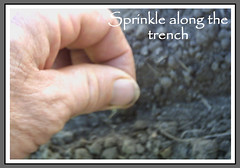
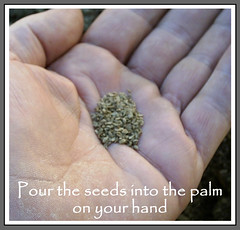 Pour the seed into the palm of your hand and then, pinching some of the seeds between your fore-finger and thumb, sprinkle the seeds lightly along the rows. Please note here that some gardeners mix sand with the seeds to ensure they are sown thinly. Some mix other seeds like radishes together with the carrot seeds so that, as the carrots develop, they can be feasting on the fast growing radishes while creating a more natural, and easier, method of thinning that the carrots unfortunately require. Unfortunate because thinning can be a bit time consuming, but well worth the effort. Once sown cover the seeds (1cm, 1/2 in) and firm the soil with the hand. Another practice I often employ is to grow fast growing crops between the rows such as lettuces radishes, bok choy ..etc and harvest when ready or overgrown by the root crops foliage.
Pour the seed into the palm of your hand and then, pinching some of the seeds between your fore-finger and thumb, sprinkle the seeds lightly along the rows. Please note here that some gardeners mix sand with the seeds to ensure they are sown thinly. Some mix other seeds like radishes together with the carrot seeds so that, as the carrots develop, they can be feasting on the fast growing radishes while creating a more natural, and easier, method of thinning that the carrots unfortunately require. Unfortunate because thinning can be a bit time consuming, but well worth the effort. Once sown cover the seeds (1cm, 1/2 in) and firm the soil with the hand. Another practice I often employ is to grow fast growing crops between the rows such as lettuces radishes, bok choy ..etc and harvest when ready or overgrown by the root crops foliage.
 Seedlings emerge in 7 – 10 days and once about 1 – 2 inches high, or when you intuitively feel it is time to do the first thinning, grab some scissors and thin away. You will notice in the photos that the seedlings can grow close to each other and need to be thinned so the roots can grow without being impeded by other seedlings growing too close. To pull the seedlings out, at this stage, will damage the stronger seedling that you choose to leave growing in the soil - so I suggest you use scissors as per the photo. Note here too you must get rid of any weeds that sprout around your seedlings so they do not interfere with their growth or fight for sun and nutrients. I thin out over at least three stages. Your intuition will tell you how far apart to thin the seedlings and which are the healthier to leave to grow. The first times you will make mistakes but after a few successive crops you will be an expert – no doubt!!!
Seedlings emerge in 7 – 10 days and once about 1 – 2 inches high, or when you intuitively feel it is time to do the first thinning, grab some scissors and thin away. You will notice in the photos that the seedlings can grow close to each other and need to be thinned so the roots can grow without being impeded by other seedlings growing too close. To pull the seedlings out, at this stage, will damage the stronger seedling that you choose to leave growing in the soil - so I suggest you use scissors as per the photo. Note here too you must get rid of any weeds that sprout around your seedlings so they do not interfere with their growth or fight for sun and nutrients. I thin out over at least three stages. Your intuition will tell you how far apart to thin the seedlings and which are the healthier to leave to grow. The first times you will make mistakes but after a few successive crops you will be an expert – no doubt!!!

The second, third, fourth and fifth thinning, which I warn can be a pain in the back and requires much patence (if you are like the impatient me), will be your first harvest for the table salad. The slender slightly fleshy roots can be added to the salad for a little extra taste and colour and the rabbits love any fresh seedling tops you can feed them. They in turn, gladly, leave deposits of recycled garden waste for you to collect and introduce to the garden as manure. Also remember each thinning produce larger roots and eventually you can add them to the pot.
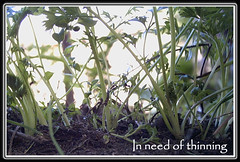
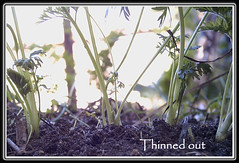 Note too the baby carrots are ready after 10 weeks so carrots are, in this light, perfect to grow for the table. Growing them in succession every 8 – 10 weeks in rows of about 3m or 3 yards is about right but after a few crops you will figure what is the right amount to grow each time and how often to suit your personal needs.
Note too the baby carrots are ready after 10 weeks so carrots are, in this light, perfect to grow for the table. Growing them in succession every 8 – 10 weeks in rows of about 3m or 3 yards is about right but after a few crops you will figure what is the right amount to grow each time and how often to suit your personal needs.
Other things to think about are things like light mulches, to keep weeds down that can impair the shape and growth of the root. They too use the nutrients and water. Do not over water otherwise the roots can get lazy and not lengthen to produce long carrots but on the other hand – remember that in the hotter months, that lack of water will dry out the root and they do not taste as nice. Rotation of crops is important – never grow carrots or any plant for that matter in the same spots in successive crops – this I will cover in another blog – so please trust me for now (wink). There are other localised problems to do with carrot flies and such so I advise you source books from the library or talk with other gardeners in your street. Once you start to garden you will find there are many others who not only enjoy gardening but readily share experiences and seeds.

Another great use for the foliage is to use it as a green backdrop in flower arrangements in the home or my favourite is to use as a garnish to improve the look of your family meals. It not only looks great but makes it taste better because of the joy of seeing such beauty on the plate – tastes come from the mind as much as the taste buds – believe me!

So before I finish I want to give you links to two other great blogs on gardening that my online friends Jeremy and Amy have produced. I am thinking here to perhaps start a group blog on gardening so we can share and grow together healthy gardens, bodies, minds and spirits let me know what you think.
Please look below to the links to the other sites on gardening as metioned above
this is the link to Amy's site http://amyukalichick.multiply.com/journal/item/98/Let_the_birds_and_insects_do_it.
and Jeremy's - http://sotuis.multiply.com/journal/item/74


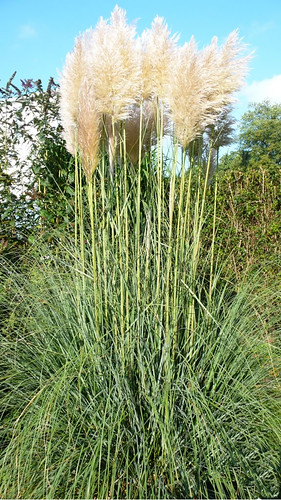
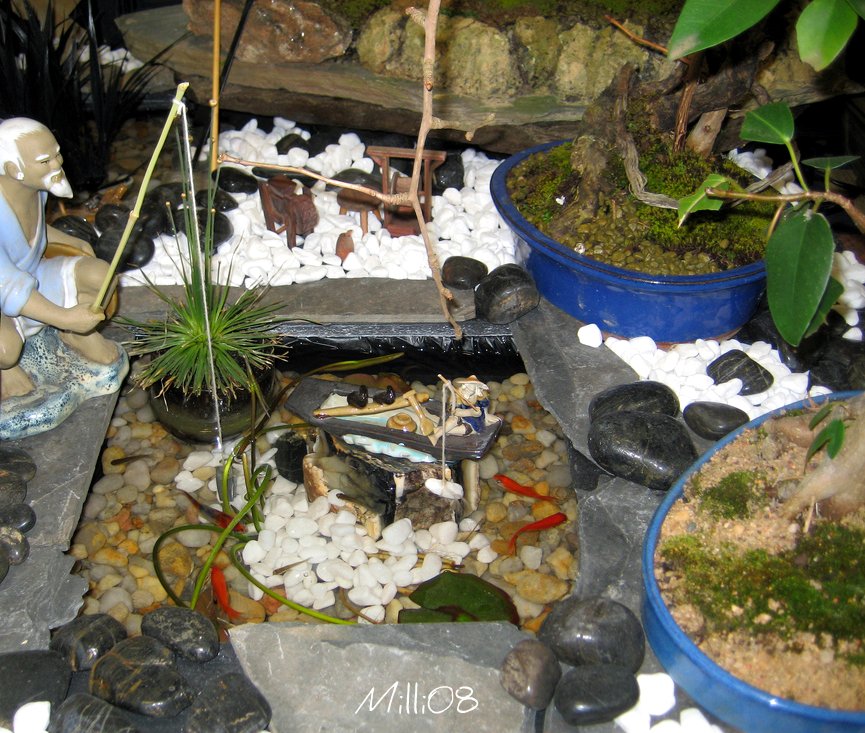












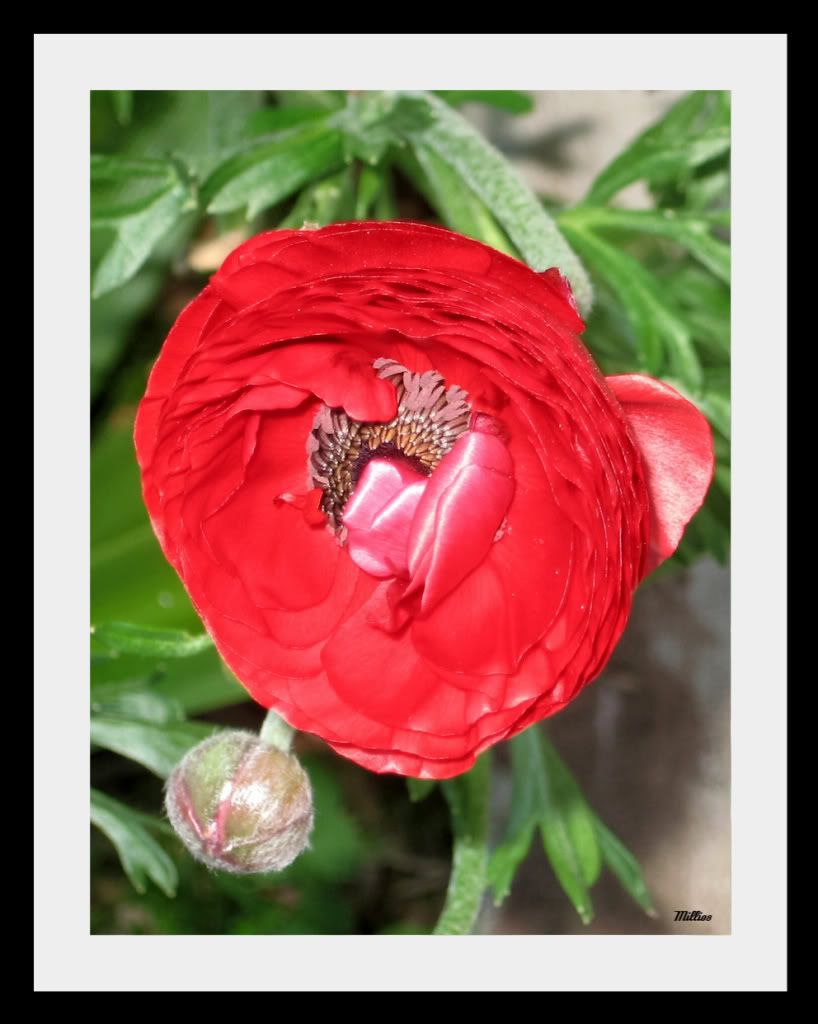


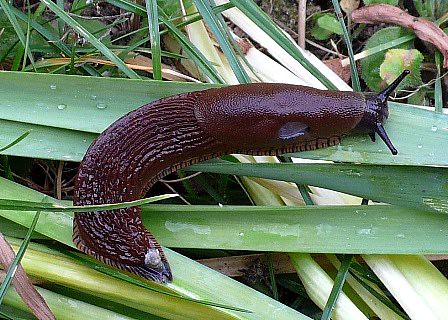
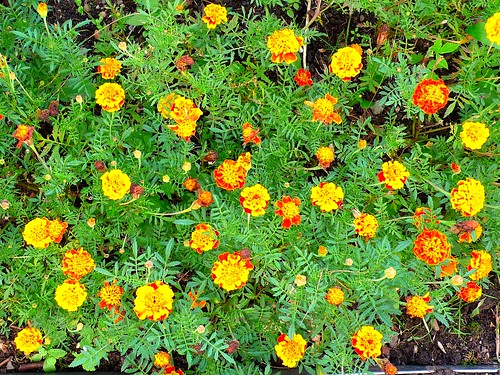

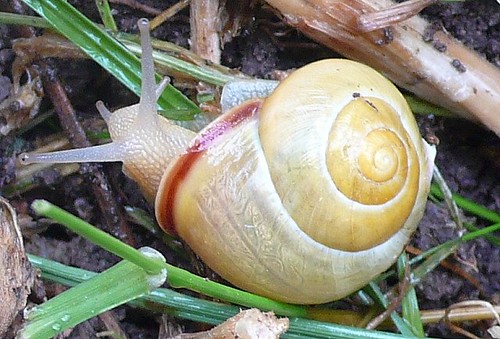
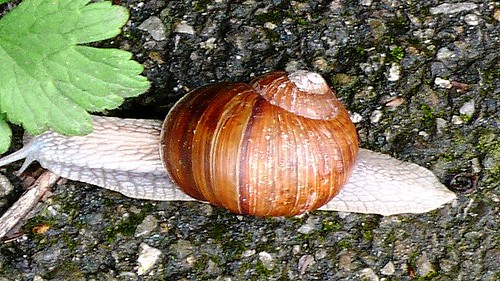
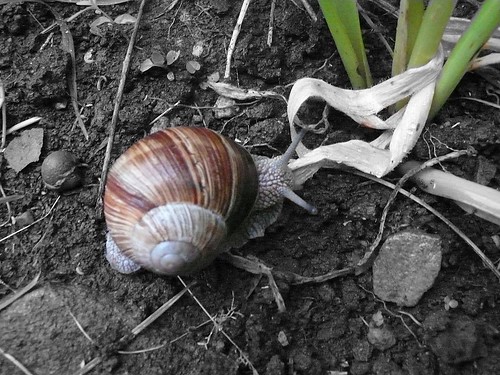
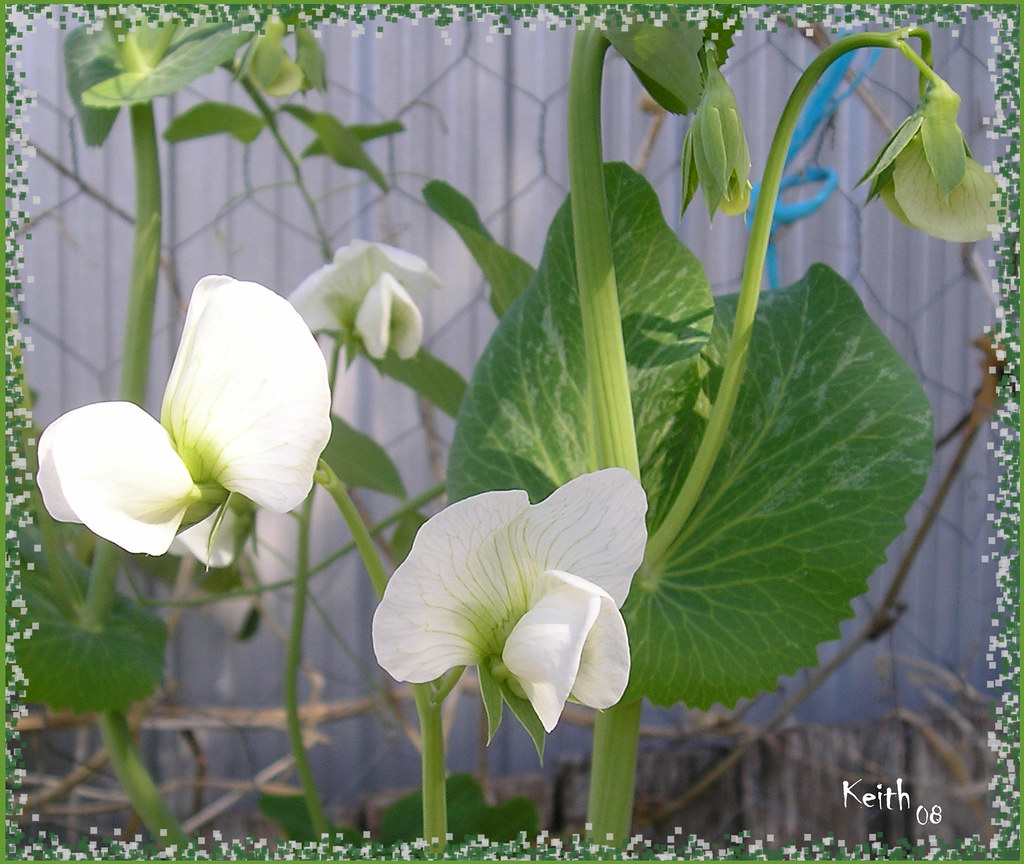 Snap Pea Flower
Snap Pea Flower

 The Kauri is classed as one of the world's mightiest and ancient of trees. They can grow up to 50 metres tall. The timber is used for making furniture and souvenirs. Northland is still the home of great Kauri forests, they are a bit of a touristy thing now. Because of geographical isolation and pressure for the trees to be protected, they now are. The history behind them is fascinating.
The Kauri is classed as one of the world's mightiest and ancient of trees. They can grow up to 50 metres tall. The timber is used for making furniture and souvenirs. Northland is still the home of great Kauri forests, they are a bit of a touristy thing now. Because of geographical isolation and pressure for the trees to be protected, they now are. The history behind them is fascinating.




